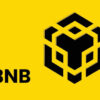
As the cryptocurrency market continues to evolve, stablecoins have emerged as a key component of the digital asset ecosystem. Among the most prominent stablecoins is Tether (USDT), which has played a pivotal role in enabling seamless transactions, providing liquidity, and mitigating the volatility that defines most cryptocurrencies. In this article, we will explore the role of Tether in the cryptocurrency market, highlighting its use cases, impact, and the challenges it faces in this rapidly changing landscape.
1. What is Tether (USDT)?
Tether (USDT) is a fiat-collateralized stablecoin, meaning its value is pegged 1:1 to the U.S. dollar. Launched in 2014 by Tether Limited, USDT was designed to provide the benefits of cryptocurrency—such as speed and decentralized access—without the extreme volatility that comes with other digital assets like Bitcoin or Ethereum.
- Pegged to the U.S. Dollar: Tether maintains its value by holding reserves of U.S. dollars or equivalent assets. For every 1 USDT in circulation, Tether claims to hold $1 in reserve.
- Stable Value: Unlike Bitcoin or altcoins, Tether’s price rarely fluctuates, staying close to $1. This makes it an essential tool for traders looking for stability in a highly volatile market.
2. The Importance of Tether in the Cryptocurrency Ecosystem
1. Liquidity and Trading Pair Dominance
One of the primary roles of Tether in the cryptocurrency market is providing liquidity. USDT is widely used on most major cryptocurrency exchanges, where it is often paired with other digital assets like Bitcoin, Ethereum, and Litecoin. In fact, Tether consistently ranks among the top cryptocurrencies by trading volume, often surpassing Bitcoin.
- Trading Pairs: On many exchanges, Tether is used as a substitute for the U.S. dollar in trading pairs (e.g., BTC/USDT, ETH/USDT). This allows traders to easily move in and out of volatile cryptocurrencies without needing to convert back into fiat currencies.
- Hedging Tool: During periods of extreme volatility, traders often convert their holdings into USDT to hedge against price fluctuations. This provides them with a stable store of value without having to exit the crypto market entirely.
2. Facilitating Arbitrage Opportunities
Tether’s widespread use across exchanges also plays a key role in facilitating arbitrage. Arbitrage involves taking advantage of price discrepancies between different markets. Traders can buy an asset on one exchange where it’s undervalued, then sell it on another exchange where it’s overvalued, profiting from the difference.
- Cross-Exchange Transfers: Tether’s stable value makes it ideal for moving funds quickly between exchanges, enabling arbitrage traders to capitalize on price differences efficiently.
- Fast Settlement: Compared to traditional fiat transfers, which can take days, transferring Tether between exchanges is faster and cheaper, enhancing its utility in high-speed trading strategies.
3. Simplifying Cross-Border Payments and Transfers
Tether is also used for cross-border payments, offering a more stable and cost-effective solution compared to traditional remittance systems. Cryptocurrency users can transfer USDT across borders quickly and with minimal fees, making it a popular choice in regions where access to stable fiat currencies is limited or costly.
- Global Transactions: Tether enables global transactions without the need for conversion between multiple fiat currencies, which reduces currency conversion fees and the impact of fluctuating exchange rates.
- Low-Cost Transfers: Since transferring USDT on blockchain networks (like Ethereum, Tron, or Solana) is generally faster and less expensive than traditional banking systems, it offers an efficient method for international money transfers.
4. DeFi and Lending
Tether plays a significant role in the burgeoning decentralized finance (DeFi) sector. On decentralized platforms, USDT is often used for lending, borrowing, and providing liquidity to automated market makers (AMMs) like Uniswap and PancakeSwap.
- Collateral in DeFi Protocols: USDT is used as collateral in many DeFi protocols, allowing users to borrow other cryptocurrencies while locking their USDT as a guarantee. This helps in maintaining liquidity and facilitating seamless transactions on decentralized applications (DApps).
- Liquidity Pools: By providing USDT to liquidity pools, users earn interest or a portion of the trading fees, incentivizing more people to participate in DeFi while offering a stable asset for the system.
3. Tether’s Role in Mitigating Volatility
Cryptocurrency markets are known for their wild price swings, which can make trading and holding digital assets risky. Tether, with its stable price pegged to the U.S. dollar, provides a safe harbor during periods of high volatility.
- Safe Haven During Market Swings: When the prices of Bitcoin or altcoins drop, traders often convert their assets into USDT to preserve value. Tether allows them to stay within the cryptocurrency ecosystem without losing value to price fluctuations.
- Stable Medium of Exchange: In countries with unstable national currencies, USDT is sometimes used as a medium of exchange. By pegging to the U.S. dollar, Tether provides a more stable alternative to local currencies suffering from hyperinflation or devaluation.
4. Challenges and Criticisms of Tether
While Tether is a valuable tool for the crypto market, it has faced significant scrutiny and controversy, particularly around the transparency of its reserves and regulatory compliance.
1. Reserve Transparency Issues
Tether has been criticized for its lack of transparency regarding the backing of its tokens. While Tether claims that each USDT is backed by U.S. dollars or equivalent assets, critics argue that the company has not provided consistent proof of its reserves. In 2021, Tether disclosed that its reserves included a mix of cash, commercial paper, and other financial instruments, which raised concerns about its solvency.
- Legal and Regulatory Challenges: Tether has been subject to investigations by regulators, including the New York Attorney General, for its reserve practices and its relationship with the exchange Bitfinex. These legal challenges have led to greater calls for transparency in stablecoin reserves.
2. Regulatory Scrutiny
With the growing influence of stablecoins, including Tether, regulators around the world are paying closer attention to their potential impact on financial stability. Governments are increasingly focused on how stablecoins could affect the traditional banking system, with many calling for stricter regulations and oversight of stablecoin issuers.
- Future Regulations: Tether may face increased regulation, particularly in the U.S., where stablecoins are under the scrutiny of the Securities and Exchange Commission (SEC) and other financial regulators. Compliance with these regulations will be essential for Tether’s continued role in the cryptocurrency market.
5. Conclusion: The Future Role of Tether in Cryptocurrency
Tether has played an indispensable role in the development of the cryptocurrency market, providing liquidity, enabling cross-exchange arbitrage, and acting as a stable store of value in a volatile ecosystem. Despite its controversies, Tether remains the most traded stablecoin by volume, highlighting its critical importance in the day-to-day functioning of the crypto market.
As the cryptocurrency space continues to grow and evolve, Tether will likely remain a dominant force, although it may face increased competition from other stablecoins like USD Coin (USDC) and regulatory pressures. Its ability to adapt to a changing regulatory landscape and maintain trust through greater transparency will determine its future role in the cryptocurrency market.











